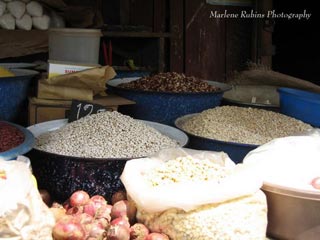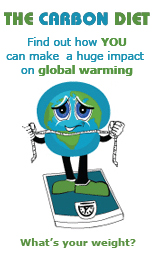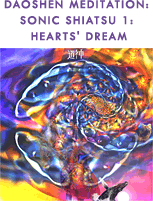Ask Ronit
 I Like Your Ponytail, A Story About Commitment
I Like Your Ponytail, A Story About Commitment
“I like your ponytail.” I said in a playful manner. “Ponytail?” he repeated in a thick French accent. There and then began the most extraordinary odyssey of my life.…
Avoid 90% of the Pesticides in Food, by Avoiding 12 Foods
Why should you care about pesticides in your food?For starters there may be as many as twenty pesticides on a single piece of fruit you eat.…
Dear Mrs. Black,It was January 1967 when this 11 year-old, frightened, little Israeli girl walked into your classroom for the first time. I had only arrived in the country two weeks before.…
With sex all around us, oozing out of our televisions, theaters, magazines, fashion, on the streets, one would think we are the most sexually informed, open and comfortable nation on the planet.”…
I’m sure by now you all have noticed the ongoing meltdown in the mortgage industry. The cause of this whole mess is a little bit complicated, rooted in both the structure of the mortgage industry, and human nature. I’ll try to explain both factors here in layman’s terms.…
Breaking old habits; Creating new Ones
We are mostly habitual beings. Webster defines habit as an acquired mode of behavior that has become nearly or completely involuntary.…
Navigation
Are My Grains Whole? Why It Matters.
By shenry
 There you are, slowly walking through the grocery store aisle – specifically the bread aisle, enjoying yummy smell of carbs. There are so many types of bread to choose from that one can get easily flustered about the best or the right kind to buy. Whole wheat, wheat flour, enriched flour….what the heck does it all mean? But no matter what kind you get, one thing is guaranteed about bread: it’s delicious. The truth is, bread can be delicious and good for you. Yup, really.
There you are, slowly walking through the grocery store aisle – specifically the bread aisle, enjoying yummy smell of carbs. There are so many types of bread to choose from that one can get easily flustered about the best or the right kind to buy. Whole wheat, wheat flour, enriched flour….what the heck does it all mean? But no matter what kind you get, one thing is guaranteed about bread: it’s delicious. The truth is, bread can be delicious and good for you. Yup, really.
But what exactly are whole grains? A grain, which is a small, hard seed such as wheat or corn, contains three layers. The three layers are bran, germ and endosperm. When we refer to whole grain, we literally mean the “whole grain”, which contains all three layers. All layers of the grain contain valuable nutrients, plus they are a great source of fiber. For weight loss, fiber is great because it takes longer to digest, thus keeping you fuller longer.
For a grain to no longer be a “whole grain”, it goes through a grain refining process where most of the bran and germ are removed, as are all the key nutrients and fiber. Refined grains are products such as white rice or white flour. Although manufacturers later add some vitamins and minerals back into refined grains after processing, they still don't have as many nutrients as whole grains do, and they don't provide as much fiber.
Whole grain, in its natural state, features a multitude of important nutrients. The bran which forms the outer layer of the seed and is a rich source of antioxidants, vitamin B1, B2, B3, E, folic acid, calcium, phosphorus, zinc, copper and iron. It also contains most of the seed's fiber. The germ, or the part from which a new plant sprouts, is a concentrated source of vitamin E, magnesium, phosphorus, iron and zinc. It also contains some protein and healthy fats. The endosperm is the largest portion of the kernel and contains most of the grain's protein and carbohydrates, but it has small amounts of vitamins and minerals. Examples of some whole grains include grains such as wheat, corn, brown rice, oats, barley, quinoa, sorghum, spelt, rye, brown rice, bulgur and oatmeal.
So, what to look for? Pay attention to the list of ingredients – the first ingredient listed is present in the largest amount, and in bread products that ingredient should include the word "whole" — whole grain, whole wheat and stone-ground whole wheat are key ingredients. These products contain the entire grain and all its health benefits.
However, here is a further breakdown of some ingredients to pay attention to. They are often listed as ingredients, but did you ever know what they really mean? Whole wheat flour contains the entire grain, providing you with the maximum healthy benefits of whole grain. Wheat flour contains neither the bran nor the germ, so its far less nutritious than whole wheat flour. Enriched wheat flour is really white flour enriched with nutrients that are lost during processing. It is the same as “white flour” except they have restored a few vitamins and minerals. Why bother? It’s pointless to consume empty calories that aren’t beneficial to the body.
Being knowledgeable about your choices help you make smart decision that will ultimately be good for your body.

 My Hero
My Hero We Are Sexual Beings
We Are Sexual Beings The Banking Implosion
The Banking Implosion















this article is very well written and interesting
Hi Shenry,
Thanks for the great informative article. One question.. if something says 100% whole wheat is that the same as 100% whole grain?
By the way, do you know the magazine called Nutrition Action? It is a a watchdog of the FDA and also debunks studies and articles that are invalid or whose research is questionabe. I think it would be a great addition to the website.
Marlene
Yes you can. Bread flour has a higher gtueln content. Gluten is the sticky protein that traps the bubbles made by the yeast and makes bread rise higher. Bread flour has more gtueln, pastry or cake flour has less. All Purpose flour is a compromise. It will work just fine but you might not get quite as much rise.You can use a little extra yeast to make up for this (kind of). You can buy gtueln by itself and add a teaspoon or two. You can let the bread rise a little longer. But the difference is not really all that much.Also, if you're baking the bread in an oven (as opposed to an automatic bread machine), get the oven just as hot as it will go before you put the bread in. This heat makes the bubbles in the bread expand so you get more rising (this is called spring'). It works in only the first few minutes, then the outside crust begins to form and the bread doesn't rise further. The hotter the oven is, the better spring you get, so crank it as high as it will go and let it pre-heat for a long time. In France (for French bread) they pump steam into the oven to inhibit crust formation to get a better spring.
fgwlnu jlskyjeohcmw
Post new comment